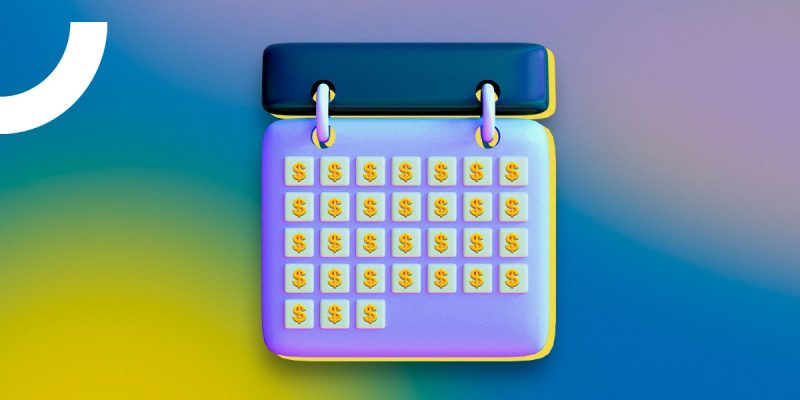
Recurring payments: a big guide to subscriptions and why it’s a long-term trend 🤑
During COVID-19 pandemic, there were several booms in online payments in Ukraine. Many have discovered not only the benefits of using Apple Pay and Google Pay, but also the mobility and simplicity of online payments. During self-isolation, we stayed at home and the possibility of delivering products, orders from restaurants or new gadgets with payment directly on the website became an absolute norm. It was then that some Ukrainians also discovered streaming services (primarily Netflix): every month a certain amount of money was debited from their card for the access to the content library. This payment method defines as “recurring payments” or simply subscription payments and in this article you will learn almost everything about them.
What are subscription payments and how big is the market?
These are regular transactions in which a certain amount of money is transferred to the services` bank account, which in turn gives its customers access to a certain service or product.
And now let’s look at some numbers. According to Wifitalents:
- One person spends an average of $237.33 on different subscription services and has about 4 subscriptions;
- 53% of the revenue of various software companies comes from the subscription distribution model.
- By 2025, the e-commerce market on the recurring payment model is estimated at $478.2 bln – it rose from 72.9 bln and in 2022
- The total size of the “subscription economy” market by 2025 is estimated at $904.2 bln.
It is very difficult to identify the most popular subscription business category – different analytical reports give a wide variety of information. The first association is, of course, OTT services of TV shows and movies content. However, this niche is much deeper.
The most popular business solutions based on subscription payments
Recurring payments for the subscription business model began to grow actively in the Tier-1 market from around 2012, primarily due to demand from large technology businesses (AppStore subscriptions, Google Play) and the already mentioned entertainment content (Netflix, Spotify, etc.). Banks and PSPs in symbiosis with bigtech companies created an effective, safe and seamless payment mechanism, which provided a much more profitable monetization model. Customer receives a service for use – doesn’t buy this or that media product without additional costs for promotion.
The effectiveness of the model was noticed by other areas of business, which ensured the constant growth of the industry. Subscription payments are primarily relevant for businesses that depend on building a loyal community:
- Rental services (car sharing, housing)
- Media (from podcasts and YouTube channels to major media outlets)
- Educational services (primarily language learning)
- Apps for professionals (photo and video editors, translators, task managers, CRM systems, etc.)
- Charitable organizations (Ukrainian practice of the so-called “donation by subscription”)
This list could go on, but the main take will be about subscription payments allowing you to effectively build a loyal relationship with your audience. Who exactly does it best?
Content aggregators
We are again talking about media content streaming services. By 2024, almost every major technology company has developed its own streaming service. According to Fortune Business Insights, the global market for streaming services was estimated at $555.89 bln in 2023, and should grow to $674.25 bln by the end of 2024. Netflix, Apple TV+ Amazon Prime Video, HBO Max (the largest Ukrainian streaming service – Megogo ) have a billion-counted worldwide audience, which grew most rapidly during COVID-19. If we compare the effectiveness of the monetization mechanism, Netflix has the largest audience, however, Apple holds the lead in terms of the payment ecosystem depth – its streaming works in synergy with iCloud subscriptions and Apple Music, which continues the listening experience.
Media
The decline in the role of traditional media (news agencies that have come online from the world of print media) has gone hand in hand with the rise of bloggers, who can now earn millions of dollars and have more audience trust than traditional media with decades of history.
And it is donations (one-time or regular subscription) that have become one of the main mechanisms of earning for content creators. This is provided by payment services such as Patreon, BuyMeACoffee or OnlyFans, where “patrons” also receive exclusive content. In Ukraine, such problems can be solved by domestic payment service providers – including bill_line. We can launch a similar solution for your business within a day!
Furthermore, later this practice was picked up by traditional media as an effective way of gathering a loyal permanent audience. Implementation of the paywal practice (restriction of access to some content on the website, which becomes exclusive to the audience with monthly subscription). A financially efficient subscription model was first built by one of the most traditional media – the New York Times and Forbes.
Applications for professionals
For several years now, the world`s most popular graphic editor Adobe Photoshop – like the entire ecosystem of professional Adobe software – has been working on a subscription model. Productivity apps (Notion, Slack, Jira) follow the same pattern. Almost any tech service that significantly simplifies daily work – from audio-to-text converting apps to automated video processing services – uses subscription payments in its unlimited versions. This allows the dev team to receive regular income and constantly develop their products, Customers, on the other hand, constantly receive updates to their usual solutions.
Charity
The practice of regular donations to charity is very similar to subscribing to media content: every week or month, customer donates to the organization. For that he\she can receive regular reports on the assistance provided or additional exclusive perks: meetings with the founders or trophy souvenirs from the military.
Why you need subscription payments
If you create an innovative solution or content, your main goal is to form a core of loyal, regular customers. Recurring payments is one of the most effective ways to keep and rally this core around understandable mechanics and get regular income for your work.
Your main advantages will be:
- Consistency: the customer is more likely to make a decision to spend a small amount each month than to make a one-time purchase for a relatively large amount.
- Regularity: Your business will have monthly income without depending on the performance of the promo.
- Retention: only up to 40% of subscribers cancel their monthly subscription within 6 months without radical reasons or changes in service quality. That is why subscription payments are one of the most effective ways to retain customers and reduce churn.
What risks and challenges should be considered
Before starting regular payments, you need to understand: subscription payments may not be suitable for everyone. In addition, it is necessary to take into account possible challenges should be taken into account in the sales funnel of goods and services.
Oversaturation of demand among customers
Subscription payments is a trending solution used by a large number of businesses. Even among one business niche. Even in Ukraine, where, unfortunately, there is a very limited market of paying population with a developed culture of paying for legal content or services.
All this leads to an overload of subscriptions and limitation of people’s financial capabilities for regular payments. In this way, a double competition is formed. In fact, your business is competing with others both for the quality or value of the product\service, and for the attention with all other customer subscriptions.
Conclusion
Subscription payments are an effective tool that can effectively solve specific business problems. It (like any other business) will not be a panacea or a universal profit generator – of course, individual exceptions and super-efficient niches are possible. That is why we advise you to launch recurring payments only if you have a solid core of customers or you’re planning to actively build it. If this is an option for you, the bill_line team is ready to create this solution for you in the shortest term possible.


